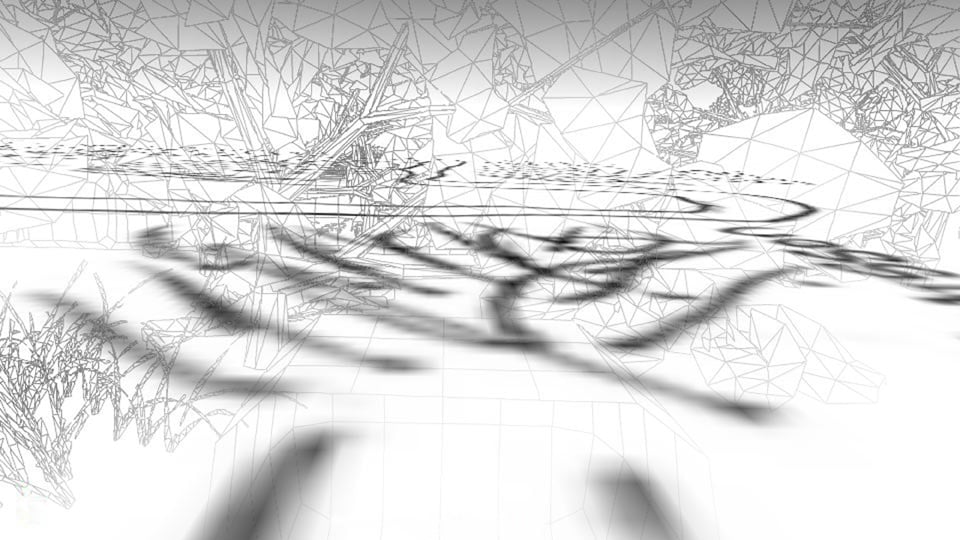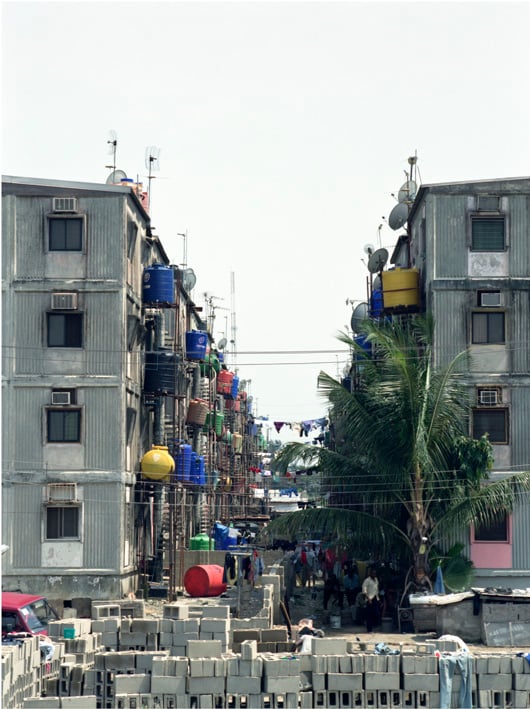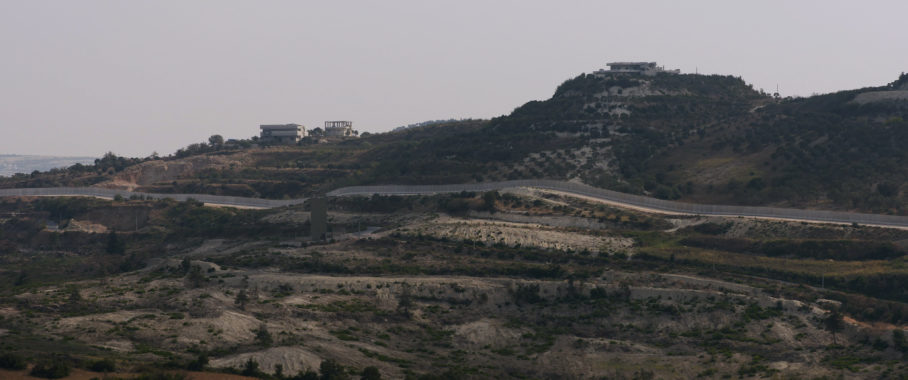
© » KADIST
Cristóbal Lehyt
Drawing & Print (Drawing & Print)
Cristóbal Lehyt has conducted thorough research on the historical and cultural complexity of the northern region of Chile where the Atacama Desert is located. This area, rich both in terms of its cultural heritage and its natural resources (such as the copper mines), is at the origins of some of the most dramatic episodes in the country’s recent political history. With the series Untitled (Given a wall, what’s happening behind it?)

© » KADIST
Otobong Nkanga
Tsumeb Fragments was produced for the exhibition at Kadist, “Comot Your Eyes Make I Borrow You Mine” in 2015. In Spring 2015, Nkanga travelled to Namibia, making her way along an almost entirely defunct railway line from Swakopmund to Tsumeb. The artist was intent on reaching The Green Hill in Tsumeb, an area renowned for its minerals, crystals and copper deposits.

© » KADIST
Hayoun Kwon
Lack of evidence is the account of a Nigerian called Oscar exiled in France, which confronts a historical and social reality with a personal and intimate testimony. Taking as a point of departure Oscar’s request for asylum in France, this fictional document is a peregrination on the different levels of the reconstitution of memory and the subjectivity of its interpretation. Oscar’s legal testimony reveals a dramatic reality taking place in Nigeria, where family executions still exist in the case of having twins who are considered a ‘diabolical off-spring’.

© » KADIST
Ei Arakawa and Sergei Tcherepnin
Part of a series entitled “Looking at Listening”, 2011, the piece invited the spectator to experiment and consider sound as a kinetic and synesthetic process, where multiple experiences and senses can cross. The presented photographs were selected from the New York Public Library and found in an archive called ‘Listening,’ with the sub-genres ‘town meetings,’ ‘investigation,’ ‘audiences 1960–1970’ and ‘conversation.’ Taking the photographs from the city’s archive of frozen moments of audio exchange, Arakawa and Tcherepnin give sound and movement back to past moments. In each of the photographs, people are listening in different situations—public, and private.

© » KADIST
Goshka Macuga
In this anti-collage, which comes from a series of 4, Macuga takes a photo she found in the archives of Zacheta National Gallery in Warsaw. The series was made on the occasion of her exhibition there in 2011. In 2000, Harald Szeemann curated an exhibition at Zacheta called ‘Beware of Exiting your Dreams: You May Find Yourself in Somebody Else’s.’ The exhibition provoked a violent response as a result of his inclusion of Maurizio Cattelan’s La nona ora , where the figure of the Pope is struck down by a meteor.

© » KADIST
Eric Baudelaire
In a society saturated by images, Eric Baudelaire is interested in political events that have not found their representation. For the film The Anabasis of May and Fusako Shigenobu, Masao Adachi and 27 Years without Images, Baudelaire conducted research on 1970s Japanese cinema and more specifically on Wakamatsu and Masao Adachi’s filmography. In 1971, as the two legendary filmmakers of Japanese Nouvelle Vague were on their way home from a presentation at the Cannes festival, they stopped in Beirut, where their thinking concerning the image took the form of political activism.

© » KADIST
Sriwhana Spong
Inspired by the 1934 novella Duo by the French writer Colette, Sriwhana Spong’s film Beach Study explores ideas of disappearance and the ephemeral, both physically and psychologically. In the film, a female body conducts abstract dance movements on a beach, responding to the environment that surrounds her. This particular beach was one the artist loved as a child, but today it is hardly accessible because it is in the hands of a private landowner.

© » KADIST
Shilpa Gupta
Drawing & Print (Drawing & Print)
These hand drawn maps are part of an ongoing series begun in 2008 in which Gupta asks ordinary people to sketch outlines of their home countries by memory. Gupta created each map by superimposing 100 separate drawings of each country. The project investigates modern notions of the nation-state, national identity, and borders by looking at countries in which boundaries are contested and the history of the land far precedes such ideas.
Sriwhana Spong
Indonesian-New Zealand artist Sriwhana Spong’s practice invests in notions of transition, memory, translation, and the relationship between public and private space, the intuitive and the cerebral, and the body and its surroundings...
Hayoun Kwon
Born in 1981 in Seoul, South Korea Lives and works in Paris and Nantes Hayoun Kwon was born in South Koera in 1981 and moved to France in 2011 to pursue her studies at the Nantes School of Art and Le Fresnoy, where she presented the video Lack of evidence for her final diploma...
Otobong Nkanga
Visual artist and performer, Otobong Nkanga’s (b...
Eric Baudelaire
Currently based in Paris, Franco-American artist Eric Baudelaire has developed an oeuvre primarily composed of film, but which also includes photography, silkscreen prints, performance, publications and installations...
Shilpa Gupta
- location: Mumbai, India
- year born: 1976
- gender: female
- nationality: Indian
- home town: Mumbai, India
Ei Arakawa and Sergei Tcherepnin
Ei Arakawa and Sergei Tcherepnin began their audio-visual and performative collaboration in 2007...
Goshka Macuga
She works with archival materials she finds in libraries and museums...



